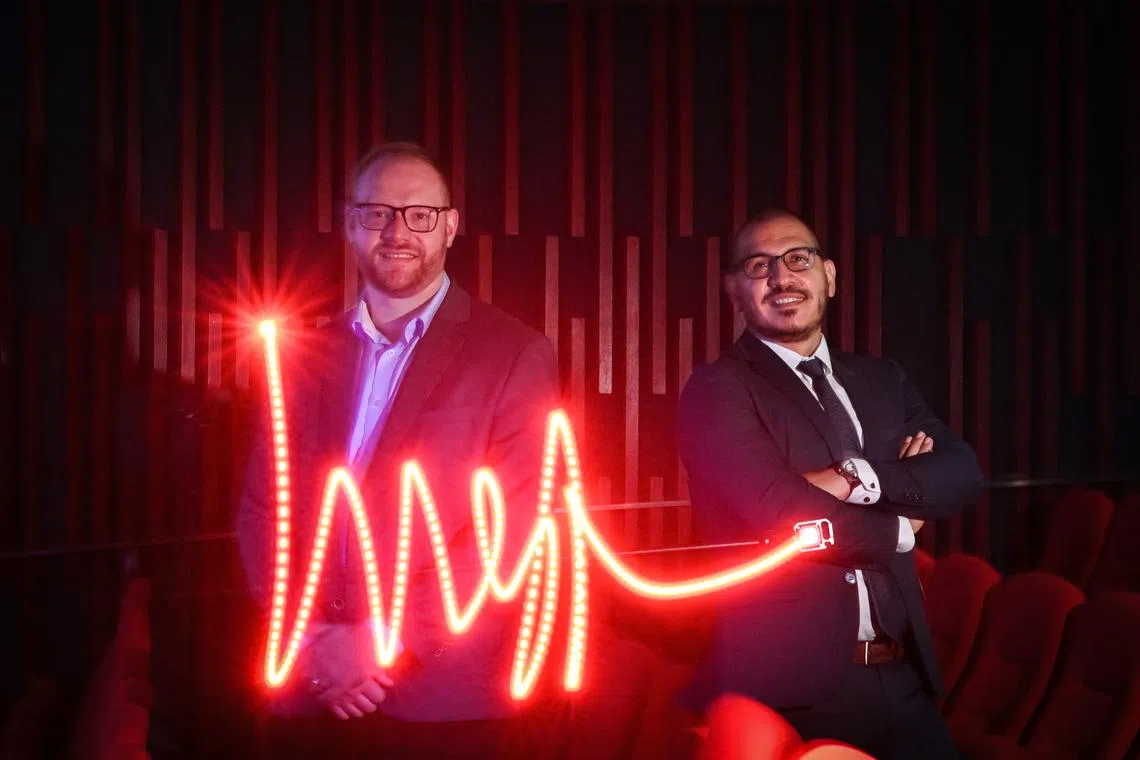Study aims to use sunlight to reduce myopia in children, help seniors age better
Sign up now: Get ST's newsletters delivered to your inbox

Professor Manuel Spitschan (left) from the Technical University of Munich and NUS' Assistant Professor Raymond Najjar who are the lead principal investigators of the project.
ST PHOTO: LIM YAOHUI
SINGAPORE - A new research project is looking to optimise light exposure for schoolchildren and senior citizens, in order to reduce myopia rates in the young, and improve the sleep quality and mood of the elderly.
Led by Tumcreate, the research platform of the Technical University of Munich (TUM) in Singapore and the National University of Singapore’s (NUS) Yong Loo Lin School of Medicine, the three-year research project from 2023 to 2026 is funded by the National Research Foundation to the tune of $5 million.
Called LightSPAN, the project will have two studies that will commence in 2025 – one involving children between the ages of seven and 10, and another involving older adults aged 65 and above – said researchers on Thursday at the Campus for Research Excellence and Technological Enterprise located in NUS.
All participants will be given a wearable light sensor that they put on throughout the day to measure visible and ultraviolet light exposure. The data collected will be used to provide personalised feedback through a smartphone app called LightUP.
Elderly participants and parents of children involved in the study will be able to get information on their light exposure trends and receive recommendations through the app on how to adapt their behaviour.
“You want to have bright days and dark nights. We want to maximise exposure to light during the day to have better alertness and better regulation of the circadian rhythm... The other aspect is to minimise light exposure at night, like having good curtains to block out light pollution,” said Professor Manuel Spitschan, a professor of chronobiology and health at TUM and lead principal investigator of the project.
Circadian rhythms are physical, mental and behavioural changes that follow a 24-hour cycle.
Researchers recommend that children and the elderly have two hours of sunlight a day, and that can be done with 15-minute blocks throughout the day.
Conversely, to reduce light exposure at night, participants in the study will be advised to avoid the use of bright smartphones in the evening.
“The effects of light from a smartphone on our body and brain are most potent in the evening and at night. Any exposure to light – from room illumination or displays – in the evening and at night can shift our circadian rhythm, upset our clock, and change our hormone production,” said the researchers.
The app provides behavioural recommendations and nudges to optimise light exposure, and the goal is not to use smartphones more, but to make use of the fact that many people have smartphones, and therefore, intervention can easily be rolled out through such phones, they added.
Assistant Professor Raymond Najjar, from the Department of Ophthalmology at NUS Medicine and also a lead principal investigator of the project, said outdoor exposure and natural sunlight have been proven to reduce myopia risk.
Singapore is often labelled the myopia capital of the world, with about 65 per cent of students suffering from the condition by the time they reach the age of 12.
“Children today are experiencing insufficient outdoor and natural sunlight exposure, a concerning trend that is contributing to the alarming increase in childhood myopia. The younger the age of myopia onset, the higher the risk of myopia and associated sight-threatening conditions during adulthood. We need to stop or at least delay the onset of myopia in children, said Prof Najjar.
The study with children will involve 396 individuals, and last for a year. A third of the participants will have changes in their classroom lighting, another third will rely on the smartphone app to get adequate light exposure, while the final third will be a control group.
For the study with senior citizens, researchers will recruit 90 people for the seven-month trial. Along with their light exposure, their physical activity, sleep, mood and cognition will be measured as well.
Prof Spitschan said that as people age, sleep becomes more fragmented, and this affects a person’s body clock. This can have a negative effect on a senior citizen’s mood and cognitive function.
It is hoped that optimal light exposure can help to mitigate the effects of disruption to an elderly person’s body clock, he added.
To ensure successful translation of research outcomes, the research team will work with health and education agencies to generate key data for recommendations and guidelines.


